Carrara marble countertops have long been revered for their classic beauty and timeless appeal. Originating from the quarries of Carrara, Italy, this marble features delicate gray veining against a white or blue-gray backdrop. It’s a material that has graced the homes of royalty and the halls of historic buildings for centuries. The charms of Carrara marble lie not just in its appearance but also in its association with luxury and sophistication. However, when considering Carrara marble for your countertops, the price can be a significant factor. Understanding the various elements that influence the cost is crucial for making an informed decision.
Several factors contribute to the price of Carrara marble countertops. The first and most obvious is the quality of the marble itself. Carrara marble is available in different grades, with higher grades exhibiting more uniform veining and fewer impurities. The highest quality Carrara marble, often referred to as “statuario” or “Calacatta,” is more expensive due to its rarity and superior aesthetic qualities. Lower grades, while still beautiful, might have more noticeable imperfections and less desirable veining patterns, which can reduce their cost.
The size and thickness of the marble slabs also play a crucial role in pricing. Thicker slabs are more durable and less prone to cracking, but they are also heavier and more challenging to work with, which increases both the material and labor costs. Standard thicknesses for marble countertops are typically 2 cm (3/4 inch) or 3 cm (1 1/4 inches), with the latter being more expensive due to its greater durability and the additional material required.
The complexity of the installation is another important factor. Simple, straight-edged countertops are easier and less expensive to install than those with intricate edges or custom shapes. If your countertop design includes features such as curved edges, integrated sinks, or waterfall ends, expect to pay a premium for the additional labor and skill required. Additionally, the need for precision in cutting and fitting marble means that experienced and skilled craftsmen are essential, which can further drive up the cost.
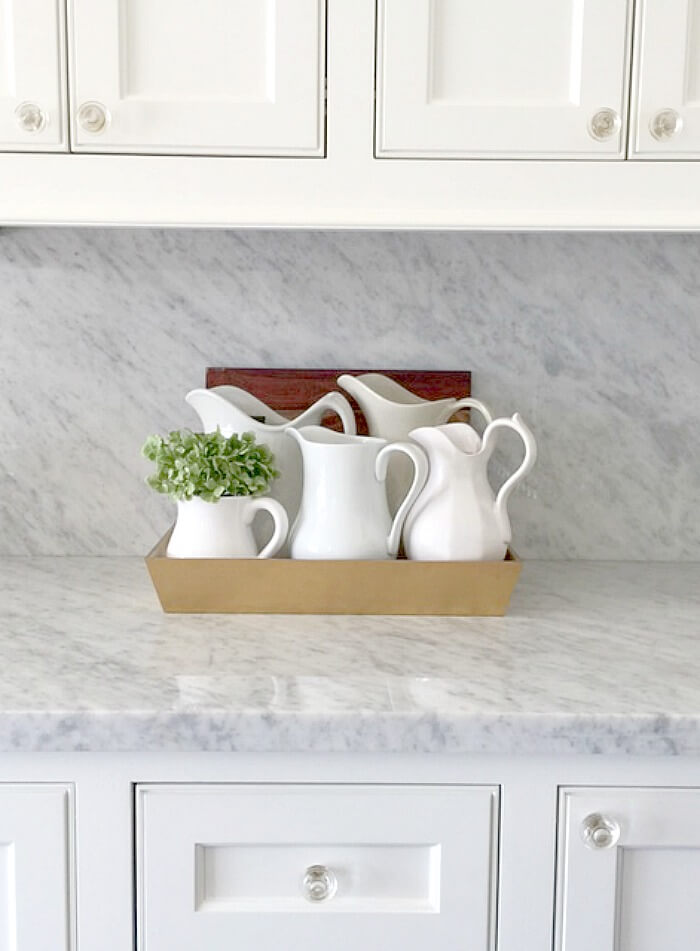
Geographic location can significantly influence the price of Carrara marble countertops. If you live near a major port or in an area with a large number of stone suppliers, you may benefit from lower transportation costs and increased competition among vendors. Conversely, if you live in a remote or less accessible area, the cost of shipping heavy marble slabs can add substantially to the overall price.
The sourcing and availability of Carrara marble also impact its price. Marble is a natural resource, and its extraction is subject to the conditions of the quarries in Carrara. Political, environmental, and economic factors can all affect the supply and, consequently, the cost. For example, if there are disruptions in quarry operations or increased global demand for Carrara marble, prices can rise.
In addition to the marble itself, the type of finish you choose for your countertops can affect the price. Polished finishes, which give the marble a glossy, reflective surface, are the most common and typically the least expensive. Honed finishes, which result in a matte, non-reflective surface, can be more expensive due to the additional labor involved. Specialty finishes such as leathered or brushed, which add texture to the marble, are even more costly.
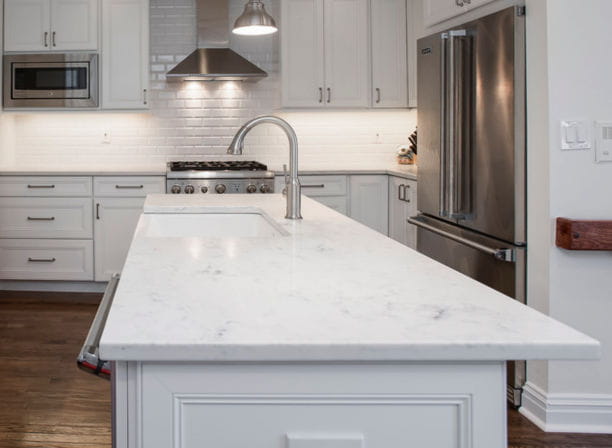
Maintenance is another cost factor to consider. While Carrara marble is undoubtedly beautiful, it is also porous and prone to staining and etching. Regular sealing is necessary to protect the marble and maintain its appearance. This ongoing maintenance adds to the long-term cost of owning Carrara marble countertops. Additionally, if the countertops become damaged or stained, professional repair or refinishing might be needed, which can be expensive.
The design and layout of your kitchen or bathroom also influence the cost. If your design requires a lot of cuts and seams, the installation will be more complex and time-consuming, increasing labor costs. Large, uninterrupted slabs are preferable for aesthetic reasons, but they can be more challenging to transport and install, further adding to the expense.
Comparing prices from multiple suppliers is essential to getting the best deal on Carrara marble countertops. Prices can vary significantly between vendors, and it’s important to understand what is included in the quoted price. Some suppliers may offer a lower price per square foot but charge extra for services such as cutting, polishing, and installation. Be sure to get detailed quotes from several suppliers and ask about any additional costs that may apply.
The reputation and experience of the supplier and installer can also affect the price. Established suppliers with a strong track record are likely to charge more for their products and services, but they may also offer better quality marble and superior workmanship. It’s worth paying a premium for a reputable supplier and experienced installer to ensure that your countertops are installed correctly and will stand the test of time.
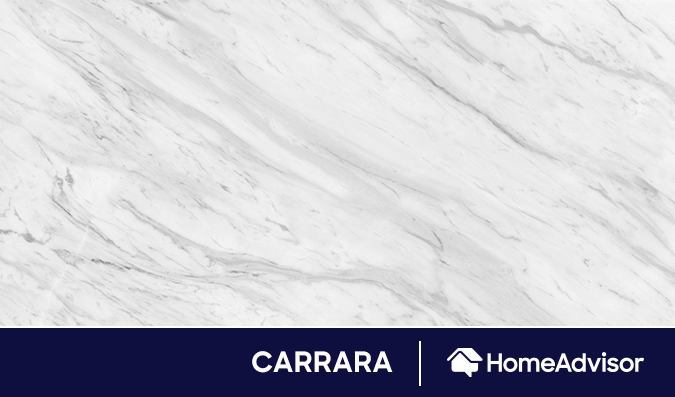
Seasonality can sometimes influence the cost of Carrara marble countertops. Demand for home renovations often peaks in the spring and summer, leading to higher prices during these periods. If you can schedule your project during the off-season, you might be able to take advantage of lower prices and shorter lead times.
When budgeting for Carrara marble countertops, it’s important to account for all associated costs, not just the price of the marble slabs. This includes labor, transportation, additional materials (such as adhesive and sealant), and any necessary permits. Taking a comprehensive approach to budgeting will help you avoid surprises and ensure that you have a realistic understanding of the total cost of your project.
In some cases, it may be possible to find discounts or promotions on Carrara marble countertops. Some suppliers offer sales or discounts on certain types of marble or during specific times of the year. Additionally, if you are flexible with your choice of marble, you might be able to find remnants or smaller slabs at a reduced price. However, be cautious of deals that seem too good to be true, as they may indicate lower quality marble or inexperienced installers.
Finally, consider the long-term value of Carrara marble countertops. While they can be expensive upfront, their timeless beauty and association with luxury can add significant value to your home. High-quality marble countertops can last for decades with proper care, making them a worthwhile investment for many homeowners. Additionally, the aesthetic appeal of Carrara marble can enhance your enjoyment of your living space and create a sense of elegance and sophistication that is hard to match with other materials.

Common Mistakes to Avoid
Underestimating Total Costs: Many people focus solely on the price per square foot of the marble slabs and overlook additional expenses like installation, labor, transportation, and maintenance. It’s crucial to get comprehensive quotes and budget for all associated costs to avoid unexpected expenses.
Choosing Based on Price Alone: Opting for the cheapest supplier or installer can lead to subpar materials and workmanship. It’s important to balance cost with quality, ensuring you get durable, beautiful countertops that are installed correctly.
Ignoring Maintenance Needs: Carrara marble requires regular sealing and proper care to maintain its appearance and prevent damage. Neglecting maintenance can lead to stains, etching, and other issues that diminish the marble’s beauty and value.
Not Considering the Design Impact: The layout of your kitchen or bathroom can influence the complexity and cost of the installation. Ensure that your design minimizes cuts and seams, and be aware that intricate designs will increase labor costs.
Overlooking Supplier Reputation: Choosing a reputable supplier and experienced installer is critical. Research suppliers read reviews, and ask for references to ensure you’re working with professionals who can deliver high-quality materials and workmanship.
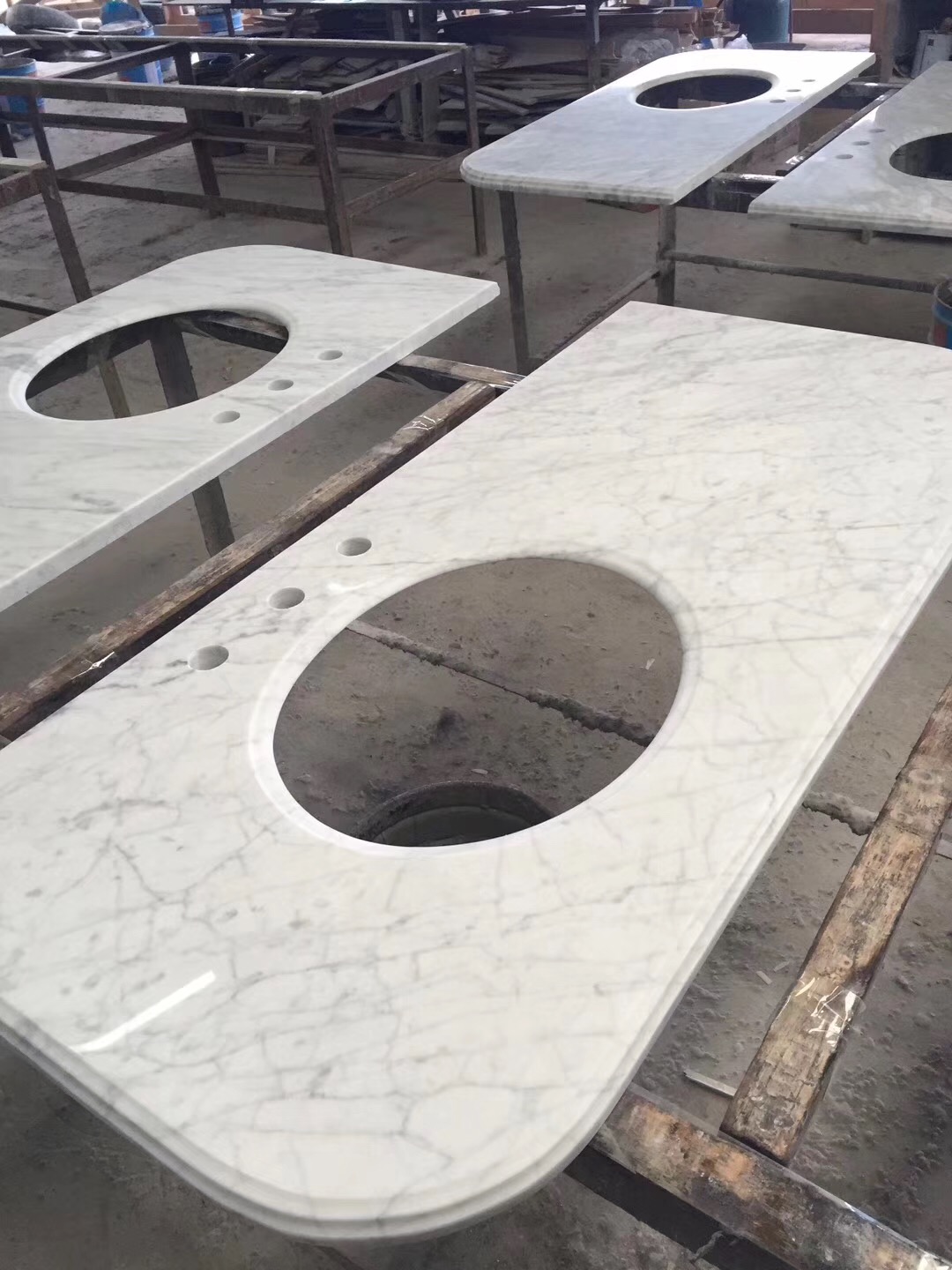
How much does Carrara marble typically cost per square foot?
The cost of Carrara marble can vary significantly based on factors such as quality, thickness, and finish. On average, you can expect to pay between $40 and $100 per square foot for the marble itself. Higher grades and thicker slabs will be at the upper end of this range or even higher. Remember, this price usually does not include installation, which can add $10 to $30 per square foot depending on the complexity of the project and the installer’s rates.
What are the main differences between Carrara marble and other types of marble?
Carrara marble is known for its relatively softer veining and white to blue-gray background, making it a popular choice for a more subtle, elegant look. In contrast, other types of marble, such as Calacatta or Statuario, tend to have more dramatic and defined veining with a brighter white background. These differences in appearance often make Calacatta and Statuario more expensive and sought after for high-end applications. Additionally, Carrara marble is generally more readily available, which can make it a more cost-effective option.
How can I maintain and protect my Carrara marble countertops?
Maintaining Carrara marble countertops involves regular cleaning with a pH-neutral cleaner to avoid damaging the surface. Acidic substances like lemon juice, vinegar, or wine can cause etching, so spills should be wiped up immediately. It’s also essential to seal the marble regularly, usually once or twice a year, depending on the usage and type of sealant. This helps to protect the marble from stains and moisture. For any significant damage or deep stains, professional restoration may be required to restore the marble’s original appearance.
Are Carrara marble countertops a good investment for my home?
Carrara marble countertops can be a good investment due to their timeless beauty and the luxury they add to a home. They can increase the resale value and appeal of your property, particularly in high-end markets. However, it’s important to consider the maintenance and care required to keep them looking their best. If properly maintained, Carrara marble can last for many years and continue to enhance the aesthetic and value of your home.
Can Carrara marble be used in high-traffic areas like kitchens?
While Carrara marble is often used in kitchens and bathrooms, it is essential to be aware of its properties. Marble is softer and more porous than some other countertop materials, making it more susceptible to scratches, stains, and etching from acidic substances. In high-traffic areas, proper care and maintenance are crucial. Using cutting boards, coasters, and trivets can help protect the surface. If you are concerned about durability, you might want to consider other materials or be prepared for a higher level of upkeep with marble.
Kitchen Renovation: How We Finally Got Our Carrara Marble
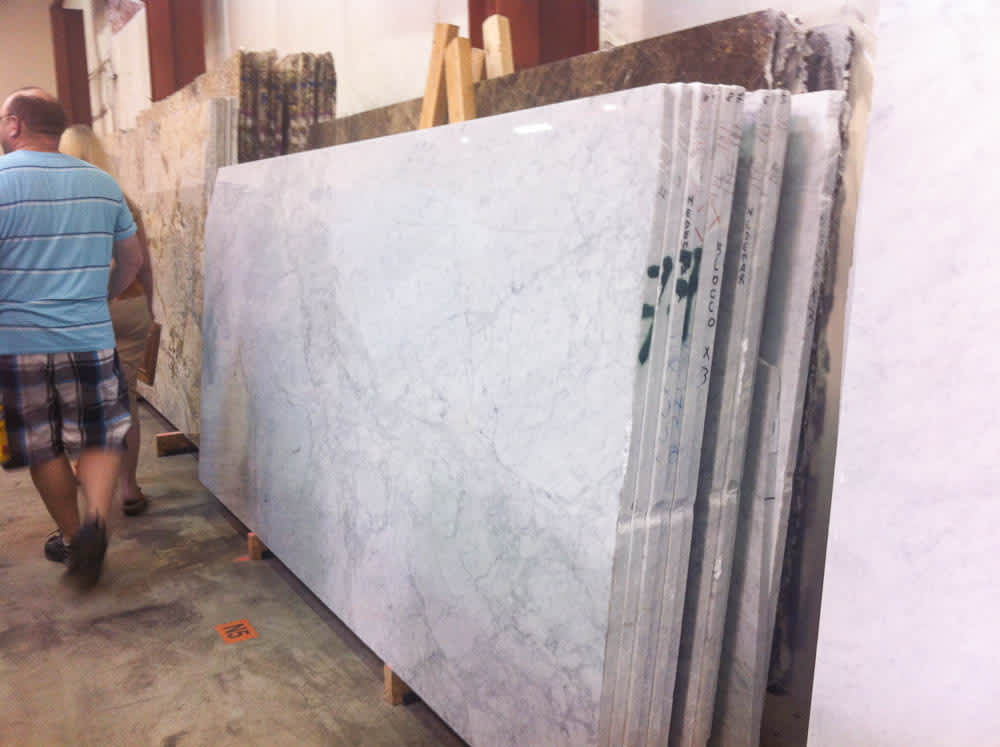
Marble Countertops Cost Cost to Install Marble Countertops
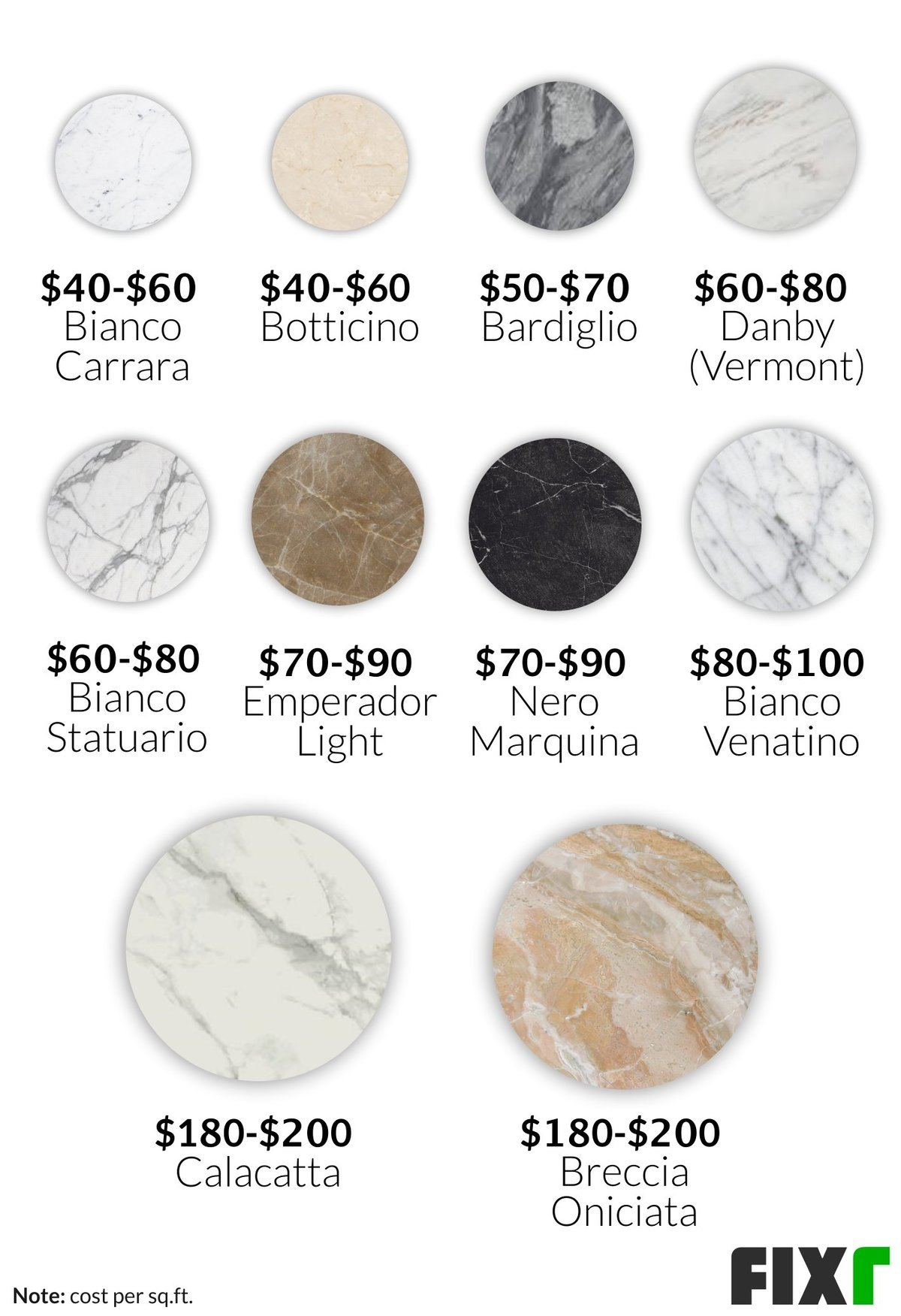
Pros and Cons of Marble Countertops – Case Against Marble Counters

How Much do Different Countertops Cost? CounterTop Guides
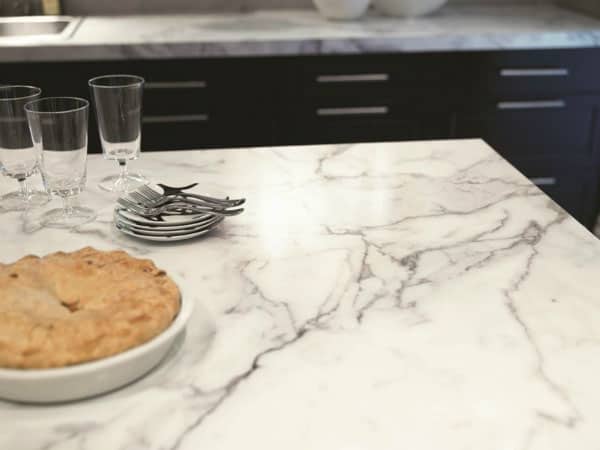
Related articles:
- Cultured Marble Countertops
- Gray Kitchen Cabinets Marble Countertops
- Modern Kitchen Marble Countertops
- Refinish Cultured Marble Countertop
- Carrara Marble Countertops Bathroom
- Marble Countertops Types
- How To Refinish Marble Countertops
- White Gray Marble Countertops
- Dark Gray Marble Countertops
- Paint Over Marble Countertops